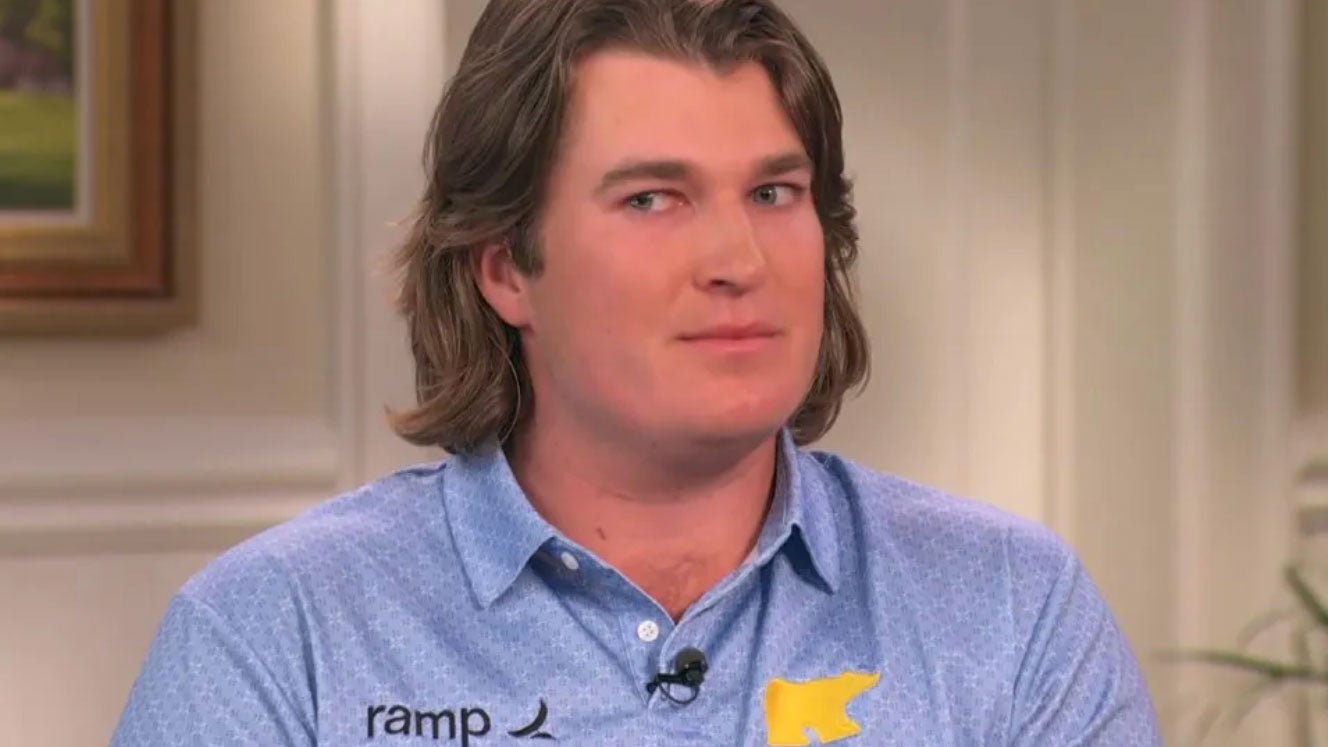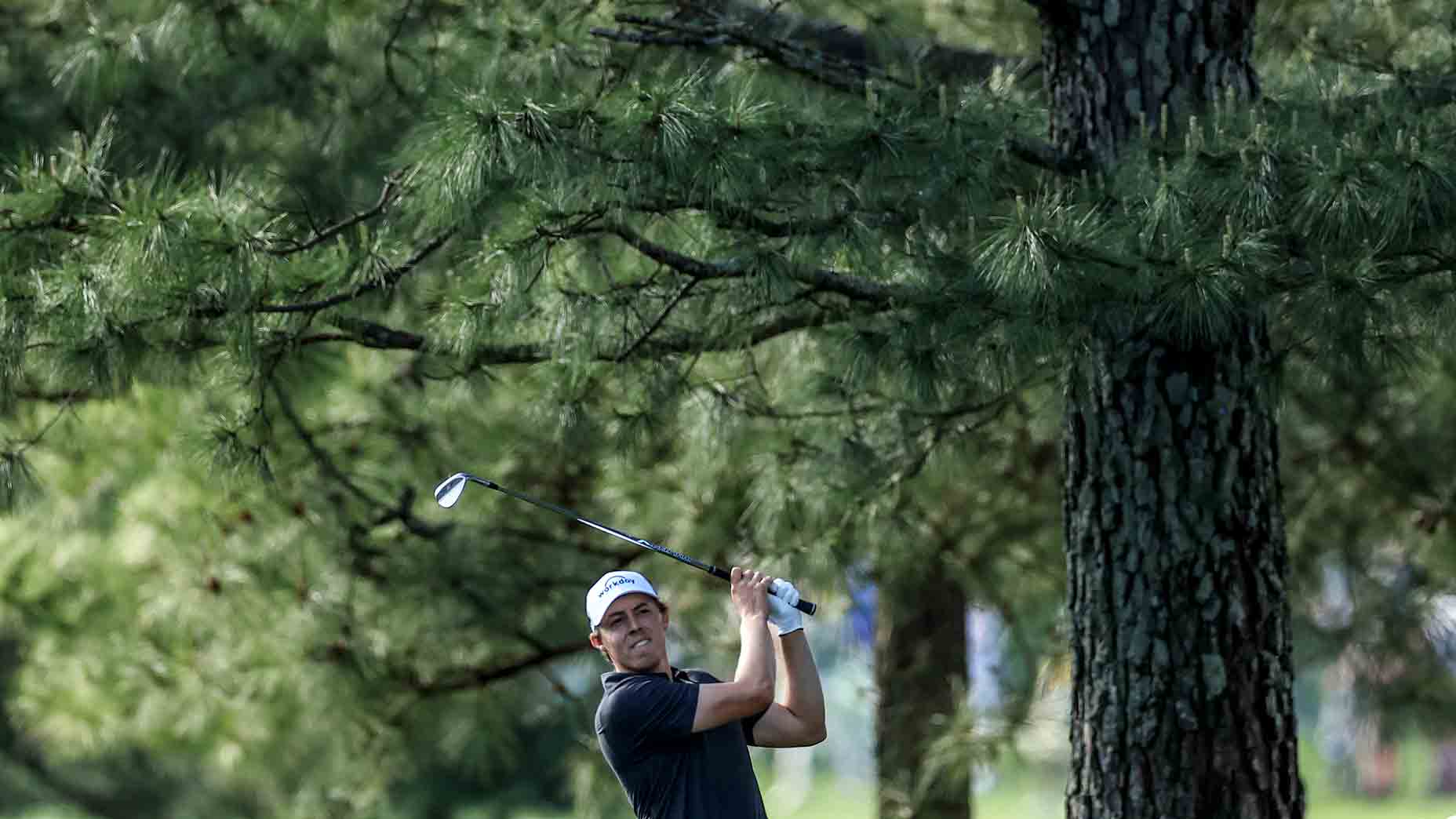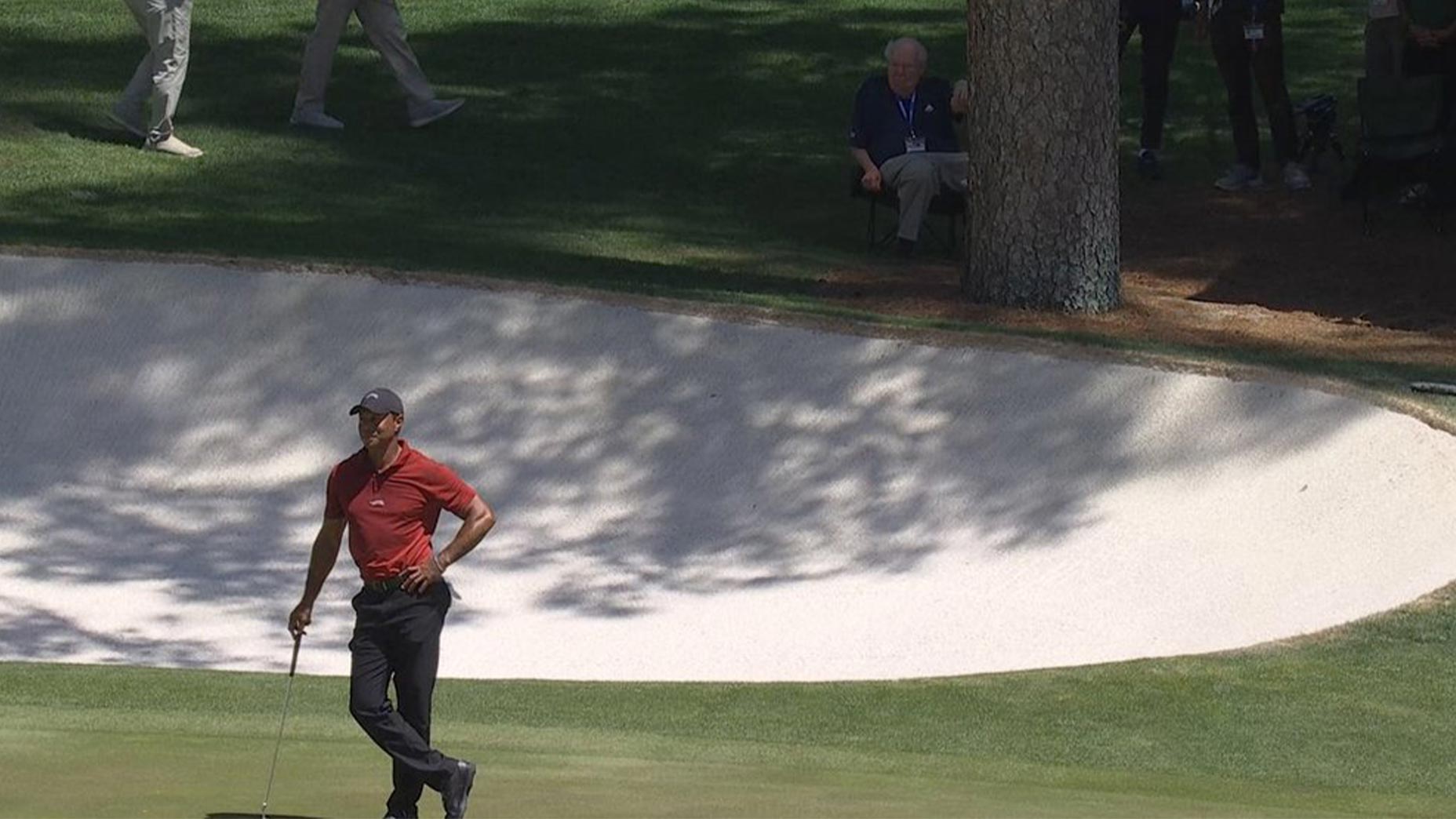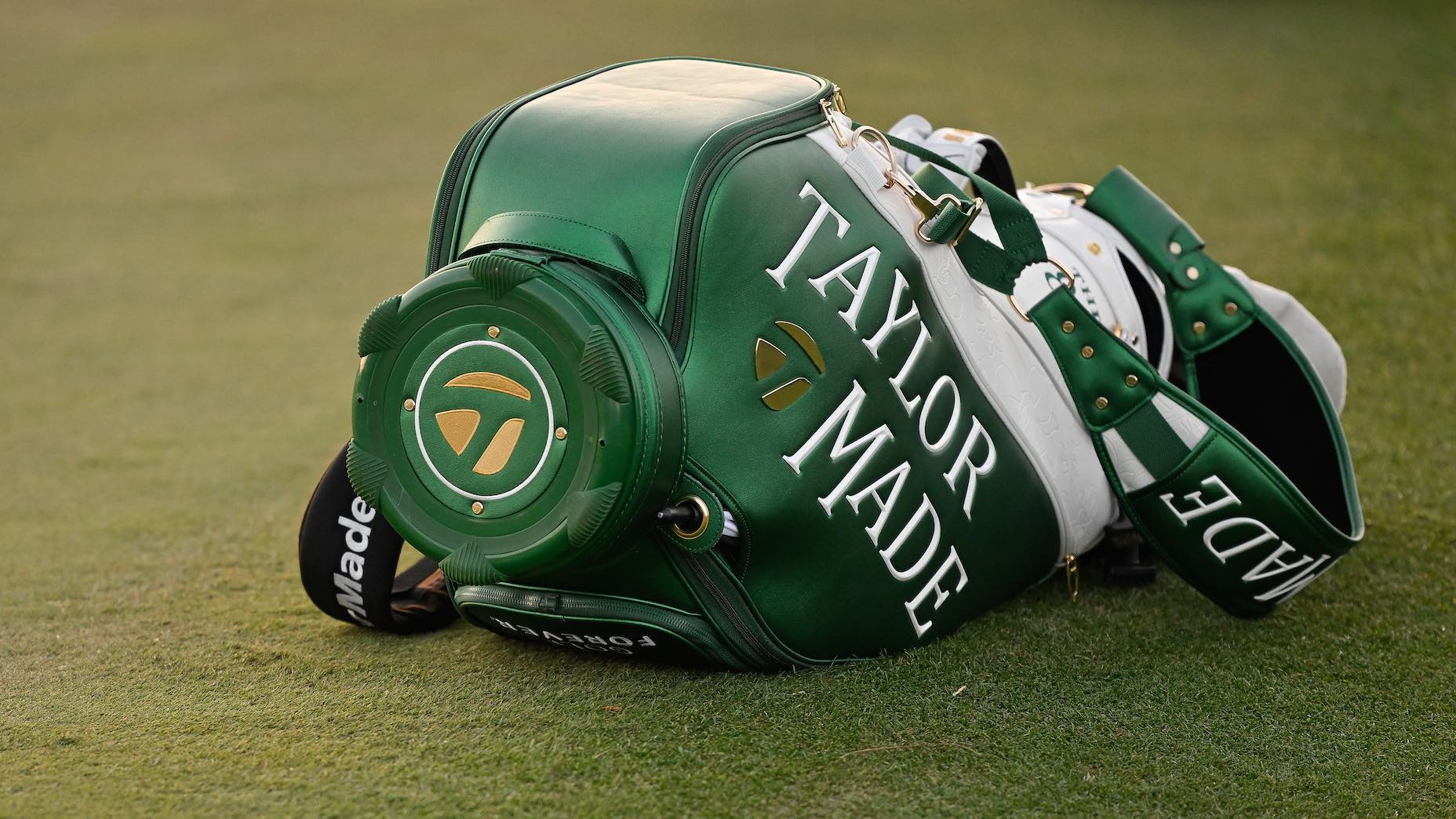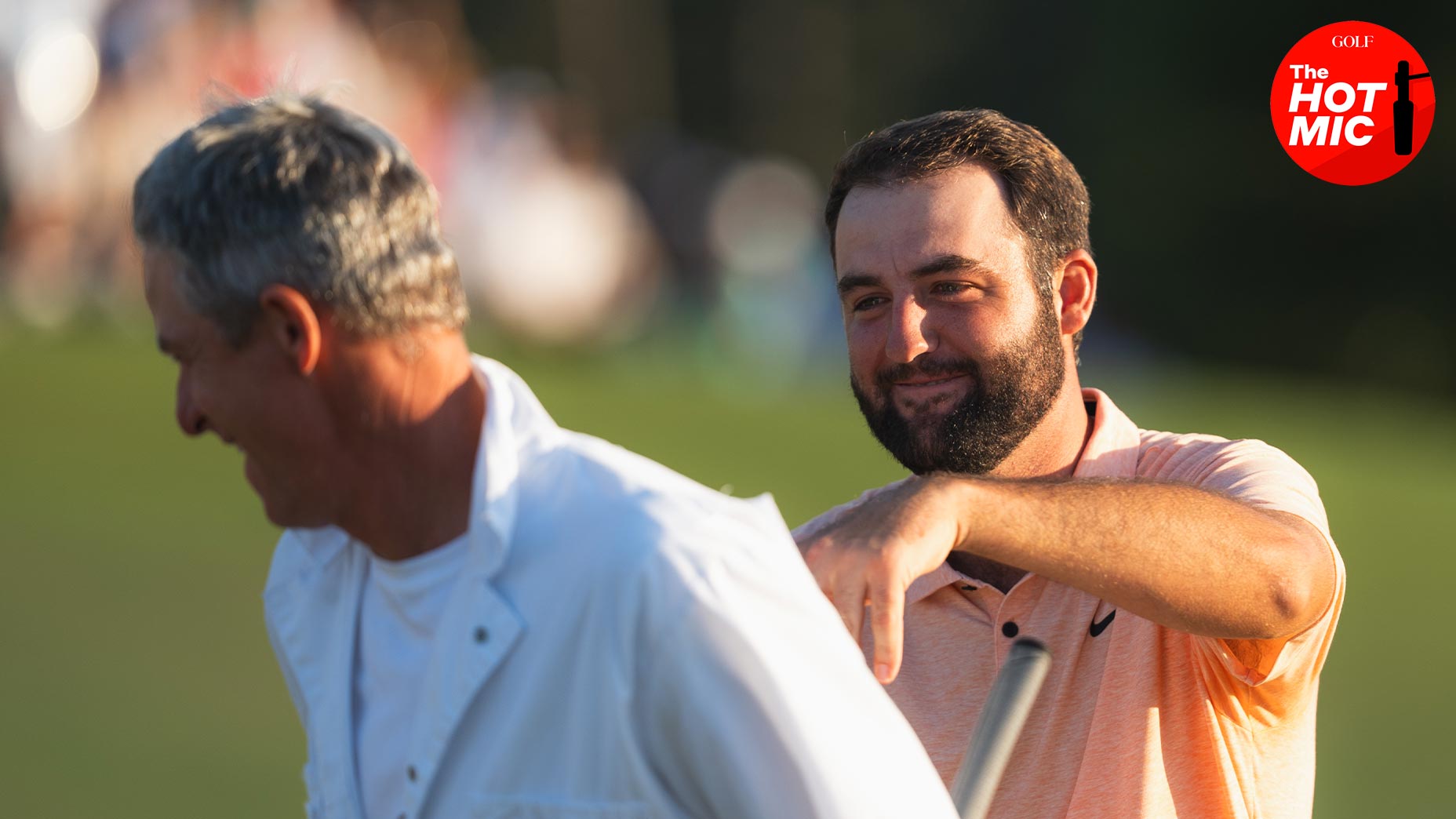Lessons from Augusta: Private planes, vanishing trees, no-phone problems and more

The 2023 Masters had everything. Here are a few moments our staff will remember.
Getty Images/GOLF
The 2023 Masters had everything: crazy weather, a (brief) Tiger Woods return, LIV vs. PGA Tour storylines, slow play, falling trees and, most of all, a deserving winner in Jon Rahm. Here, our staffers clean out their notebooks in our Lessons from Augusta.
The Masters: how a golf tournament should be?
by Sean Zak
It takes a few Masters tournaments to get your bearings as a media member. Where is the interview room? Where is the practice range? Where can you actually see above the heads of the horde of people following Tiger Woods? Once you spend enough days traipsing the property it begins to make sense why players love it so much. Augusta National, as a campus, has fewer distractions than any other golf course in the world.
We’re not talking about cell phones being banned from property. Rather the places where players can be stopped for this or that; where they can actually have privacy.
There are only two areas where media can ask you a question. If you’d like to talk to them under The Big Oak Tree, go for it. But otherwise, you won’t be bothered. There’s really just two places where players will be asked for their autograph. If that’s not your thing, walk on by. There’s only so many tee boxes on which conversations between player and caddie can heard by anyone else. Look at the smiles of Brooks Koepka, Jon Rahm and their caddies on the 2nd tee Sunday. They were… laughing? Perhaps it was about slow play.
At the Phoenix Open, players often take a shortcut through a hospitality suite just to get to the driving range. Rarely do they make it from locker room to range without being stopped. At Augusta, they bop from the fitness room to the caddie lounge to the practice range — where no patron will be within 30 yards of them — to the clubhouse, the practice putting green and 1st tee. It’s all at ease. And once they’re on the course, players are filmed through specific cameras at specific angles. Everything feels natural. It’s just players, caddies, cameras and one broadcaster inside the ropes. CBS has broadcasted the Masters for more than six decades, and only Dottie Pepper can cover the action inside the ropes.
It feels sacrilegious as a reporter to admit that less access to players might be better. But at major championships, it might be best. That’s where we want to see players lock in like never before. Where we want greatness to show up. We want to see Tiger Woods in tunnel vision, and we did on Thursday when he nearly trampled a patron. He was on a beeline for the 1st tee, not another single thought on his mind.
The real problem with Augusta’s no-phone policy
by Alan Bastable
Mobile phones are an indispensable tool for journalists. They not only allow scribes to send and receive emails and texts on assignment, but they also allow them to capture photos of their subjects (always useful when it comes time to sit down and type) and post real-time observations and quips to social media. On iPhones, which I carry, the Voice Memos app is also a blessing — for recording interviews.
The Masters, you may have heard, does not permit phones on the premises, whether you’re a lowly writer or British royalty. So if you’re in need of a recording device, there’s only one option: an old-school handheld.
I couldn’t find my recorder a week ago Monday as I scrambled to get my belongings together for a midday flight to Atlanta. No bother, I thought, I’ll buy one on the two-plus-hour drive to Augusta. After touching down, my first stop was a Staples just east of the city. No luck. Stop 2: a nearby Walmart. Nadda. And then, some 50 miles down the highway, another Walmart. Blanked again. My fourth attempt: a Best Buy about 4 miles south of Augusta National.
A salesperson directed me to a rack at the back of the store where I found a gentleman peering down at a digital recorder that he was clasping in his hand, internally debating about whether he should purchase it. It was the last one in stock. The salesperson said the store had had a rush on them — cameras also — with so many phoneless patrons preparing for the Masters. “We have nothing left,” she said.
The last remaining recorder was $70, which felt way too pricey for such a tiny machine, even given the dire circumstances. The gentleman revealed that he, too, was a Masters-bound golf writer — all the way from South Africa — and in the same predicament as me. As we commiserated, the salesperson suggested we try the Target down the road. I found the store on my phone and discovered that it had a more stomachable $30 option. But only one left in stock. My new journo friend and I glanced at one another, grinning, then fast-walked for the exit, both in search of the same elusive treasure.
When I arrived in the vicinity of the recorder rack at Target, my rival had done so first, and I could see in his hand that he had beaten me to the prize. “Don’t worry,” he said. “There are plenty more.” He added, rightfully, that he would have had faced a thorny ethical dilemma if there were not any more, given I had tipped him off. Minutes later, we both left the store with new recorders.
The week went swimmingly. I taped a couple of interviews under the club’s famed old oak and another in front of the clubhouse, near player parking, collecting reporting that helped inform my stories. On Sunday evening, a couple of hours after Jon Rahm’s win, as I was waiting in line in the Press Building for a much-needed drink, my writer friend approached me. He asked me about my recorder to which I gave a ringing endorsement. About his own device, he was less enthusiastic. It had proven useless to him, he said with a chuckle, because he had been unable to figure out the settings.
Hope he brought a notebook.
The circus leaves town
by Dylan Dethier
We pulled into the parking lot at Augusta Municipal Golf Course at 9:30 a.m. the morning after the Masters.
A smattering of cars populated the parking lot. One guy hit wedges on the driving range. The clubhouse was empty save for one employee, who sold us a couple of waters and checked us — me, colleague Sean Zak and our buddy Jake, who works for NBC — into our tee time. The whole thing cost us less than 60 bucks. That’s 60 bucks total. The first hole was open, so we teed off early.
“The Patch,” as Augusta’s muni is affectionately known, is Augusta National’s scruffier older brother. It was built in 1928 — a few years before its neighbor’s construction five miles away — and remains a bastion for affordable golf, a marked contrast to the exclusivity that defines the Masters host.
The Patch is a reminder of a lot of things. It’s a reminder that paying less than 50 bucks and playing a local public course is how most people play golf. It’s a reminder that there’s appeal in the local gem. And it’s a reminder that a course doesn’t have to be bottle-green from tees to fairways to putting surfaces to add value and build community.
The course also borders Daniel Field, the small airport in town. And if locals needed any further reminder of the Masters leaving town, playing the front nine at the muni would made it clear. A parade of prop planes and small private aircrafts cruised down the runway, one after another after another, headed to places unknown. (Bigger jets take off from AGS, the larger regional airport.)
At his annual Wednesday morning State of the Union, Masters chairman Fred Ridley announced Augusta National is partnering with Augusta Technical College, the First Tee of Augusta and The Patch.
“We hope it will be a model for other communities,” he added.
I hope it will be, too. The proposal sounds great on paper; Augusta Tech will relocate its golf course management program to the course and assume management of the place by 2025. It’s part of the National’s concerted effort to engage with its surrounding community. I know there’s excitement about the new proposal and what it’ll mean for the golf course. I also know there’s some apprehension about outsiders getting involved in a local favorite.
But it’s hard for me to know, exactly, because I was leaving town, too, a couple hours later and a couple golf balls poorer than the folks in those planes. On to Hilton Head. Back in 51 weeks.

The Masters is where green jackets are won and trees disappear
by Josh Berhow
At the Masters, everything is planned, everything taken into consideration. The chairs are green and so are the sandwich wrappers, so if those sneak onto the grass they’ll blend in and won’t be a distraction on TV. But that hardly matters, since there are volunteers to pick ’em up seconds after they hit the ground anyway.
So much can be controlled, too, like the gizmo that picks up journalists’ names during press conferences or the SubAir system built underneath the ground patrons walk on. The latter sucks excess water from the greens and allowed them to play enough golf on Saturday so they could finish the tournament on Sunday.
One thing Augusta National can’t control, however — at least we think — is Mother Nature. That proved to be the case when a couple of massive trees collapsed near the 17th tee due to high winds on Friday. But here’s where ANGC’s magic comes into play. If they can’t control something, they can at least fix it. And fast.
Dozens of workers were out there almost immediately cutting up the trunk, loading branches and blowing and raking debris. On Saturday morning, it was like it never happened — a masterclass of crisis management when it comes to golf-course maintenance.
So, what did we learn? At Augusta, everything is planned. But even surprises stand little chance against the green jackets.
The (other) merch store
by James Colgan
An admission: I am a long-suffering claustrophobe.
Small airplanes? Big issues. Subway cars? Suboptimal. But no place is worse for my general disenchantment with enclosed spaces than the Masters’ hulking merchandise center.
That building — a place Augusta National calls “the Golf Shop” — shouldn’t be an issue for me. There are vaulted ceilings stretching close to 50 feet in the air, wide corridors to encourage movement and enough space for thousands of fans at a time. But speak with anyone who’s been in there and you’ll learn why it’s one of my least favorite places in golf.
On Sunday morning, the scene on the Golf Shop floor looked like a cross between a Black Friday Walmart and The Purge. Thousands tore through what was left after a week’s worth of credit card swipes, while thousands more waited in criss-crossing lines at the entranceway to the building. A never-ending surge of people flowed in and out of the store. In order to move from place to place, one needed to push past lines of hundreds of shoppers of yelling out T-shirt and hat orders at overwhelmed-looking attendants — all for the honor of paying hundreds (or thousands) of dollars for merchandise.
If this sounds miserable to you, too, might I offer a grittier solution? The Washington Road Goodwill.
We arrived to the Masters’ other merchandise store on a rainy Saturday morning to find the parking lot refreshingly empty — unlike a lot of other Augusta establishments, the Goodwill store is relatively quiet on tournament week. Inside, there were no lines nor any commotion. Just stacks upon stacks of old Masters merchandise.
During our time in the store, we found a treasure trove of tournament goodies, from hats and long-lost shirts to a polo you couldn’t even find in the Golf Shop if you’d tried (because it was sold exclusively in the Augusta National clubhouse). Staffers told us the selection was even once a lot larger, but Masters week had drained them of inventory.
We left with a Masters shirt, a DVD recounting Phil Mickelson’s 2004 Masters triumph and a book by John Feinstein. But the best part came in the checkout line, when a cashier rang up my total.
“That’ll be $25,” she said, looking at the three items.
I think I know where I’ll be shopping next year.



